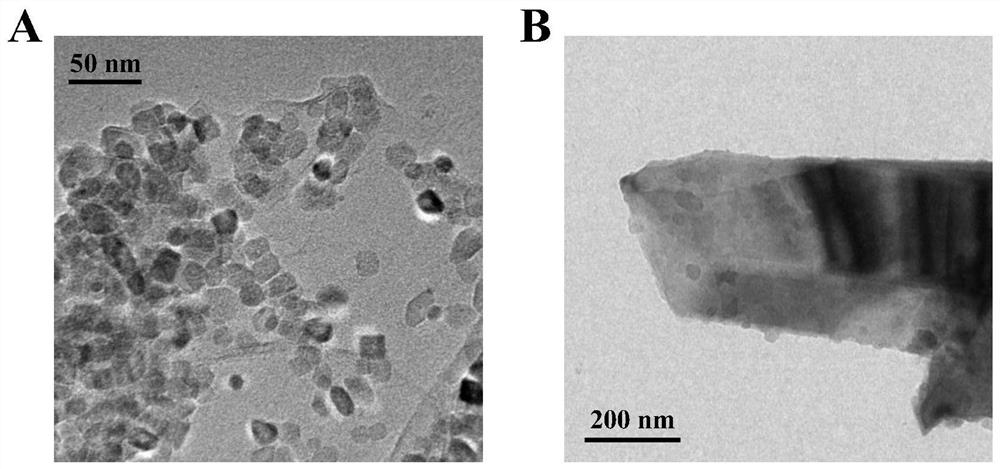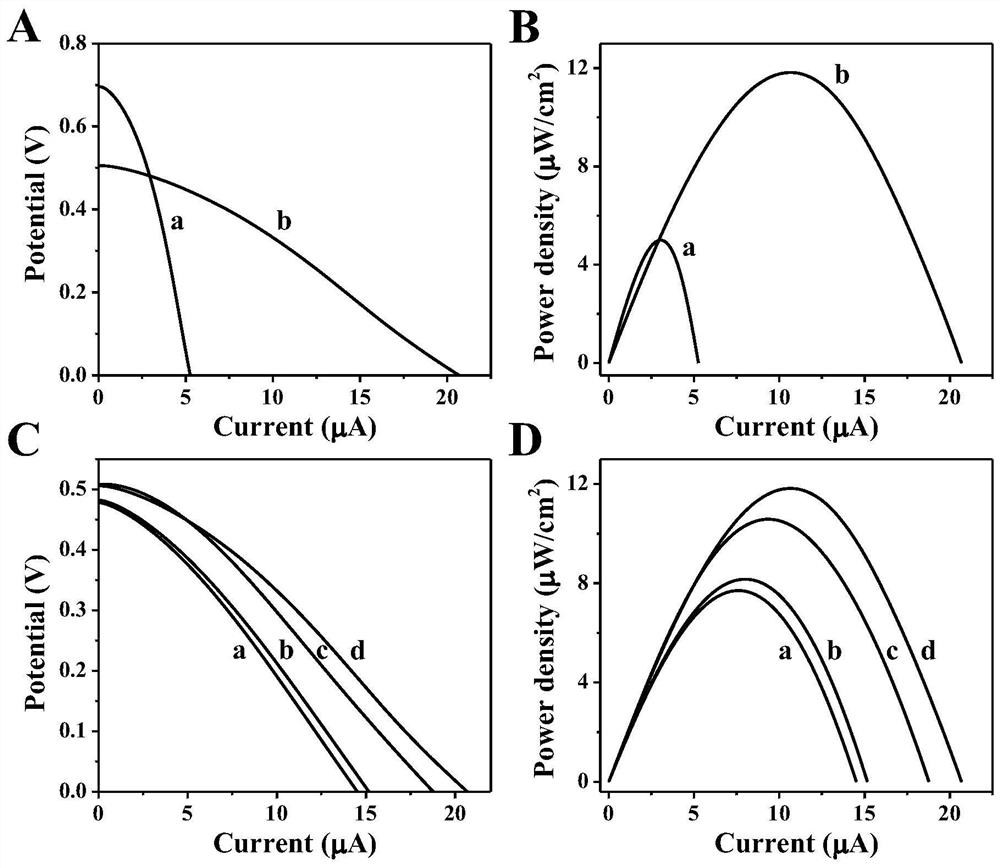Construction method of light-assisted bipolar self-energized aptamer sensor for detecting lincomycin
An aptamer sensor and construction method technology, applied in the field of electrochemical biosensing, can solve the problems of bacterial drug resistance, large scale of instruments, health problems, etc., achieve sensitive detection, reduce production costs, and avoid the use of biomass Effect
- Summary
- Abstract
- Description
- Claims
- Application Information
AI Technical Summary
Problems solved by technology
Method used
Image
Examples
Embodiment 1
[0045] (1) TiO 2 / NG preparation
[0046] Disperse 100 mg of glycine and 240 mg of titanium sulfate into 10 mL of graphene oxide aqueous dispersion (1.0 mg / mL), and sonicate for 2 h; transfer the formed suspension to a stainless steel autoclave, react at 180 ° C for 12 h, and Cool to room temperature, centrifuge, and wash the resulting precipitate three times with ultrapure water and ethanol; finally, freeze-dry to obtain TiO 2 / NG functional nanocomposites. Monomer TiO 2 It is prepared under the same conditions as above without adding glycine and graphene oxide.
[0047] (2) ZnPc / MoS 2 preparation of
[0048] Disperse 5.0mg of molybdenum disulfide and 3.0mg of zinc phthalocyanine powder into a mixed solution containing 7mL of water and 3mL of tert-butanol; place the above solution under an ultrasonic cell disruptor, and ultrasonically break it for 6 hours to obtain uniform zinc phthalocyanine Nanoparticle-modified molybdenum disulfide nanosheet suspension, namely ZnPc / M...
Embodiment 2
[0061] (1) TiO 2 / NG preparation
[0062]Disperse 50 mg of glycine and 120 mg of titanium sulfate into 5 mL of graphene oxide aqueous dispersion (1.0 mg / mL), and sonicate for 1 h; transfer the formed suspension to a stainless steel autoclave, react at 160 °C for 10 h, and Cool to room temperature, centrifuge, and wash the resulting precipitate three times with ultrapure water and ethanol; finally, freeze-dry to obtain TiO 2 / NG functional nanocomposites. Monomer TiO 2 It is prepared under the same conditions as above without adding glycine and graphene oxide.
[0063] (2) ZnPc / MoS 2 preparation of
[0064] Disperse 4.0mg of molybdenum disulfide and 2.0mg of zinc phthalocyanine powder into a mixed solution containing 6mL of water and 2mL of tert-butanol; place the above solution under an ultrasonic cell disruptor, and ultrasonically break it for 4 hours to obtain uniform zinc phthalocyanine Nanoparticle-modified molybdenum disulfide nanosheet suspension, namely ZnPc / MoS ...
Embodiment 3
[0067] (1) TiO 2 / NG preparation
[0068] Disperse 150 mg of glycine and 360 mg of titanium sulfate into 15 mL of graphene oxide aqueous dispersion (1.0 mg / mL), and sonicate for 3 h; transfer the formed suspension to a stainless steel autoclave, react at 200 ° C for 14 h, and Cool to room temperature, centrifuge, and wash the resulting precipitate three times with ultrapure water and ethanol; finally, freeze-dry to obtain TiO 2 / NG functional nanocomposites. Monomer TiO 2 It is prepared under the same conditions as above without adding glycine and graphene oxide.
[0069] (2) ZnPc / MoS 2 preparation of
[0070] Disperse 6.0mg of molybdenum disulfide and 4.0mg of zinc phthalocyanine powder into a mixed solution containing 8mL of water and 4mL of tert-butanol; place the above solution under an ultrasonic cell disruptor, and perform ultrasonic crushing for 8 hours to obtain uniform zinc phthalocyanine Nanoparticle-modified molybdenum disulfide nanosheet suspension, namely Zn...
PUM
| Property | Measurement | Unit |
|---|---|---|
| strength | aaaaa | aaaaa |
Abstract
Description
Claims
Application Information
 Login to View More
Login to View More - R&D
- Intellectual Property
- Life Sciences
- Materials
- Tech Scout
- Unparalleled Data Quality
- Higher Quality Content
- 60% Fewer Hallucinations
Browse by: Latest US Patents, China's latest patents, Technical Efficacy Thesaurus, Application Domain, Technology Topic, Popular Technical Reports.
© 2025 PatSnap. All rights reserved.Legal|Privacy policy|Modern Slavery Act Transparency Statement|Sitemap|About US| Contact US: help@patsnap.com



